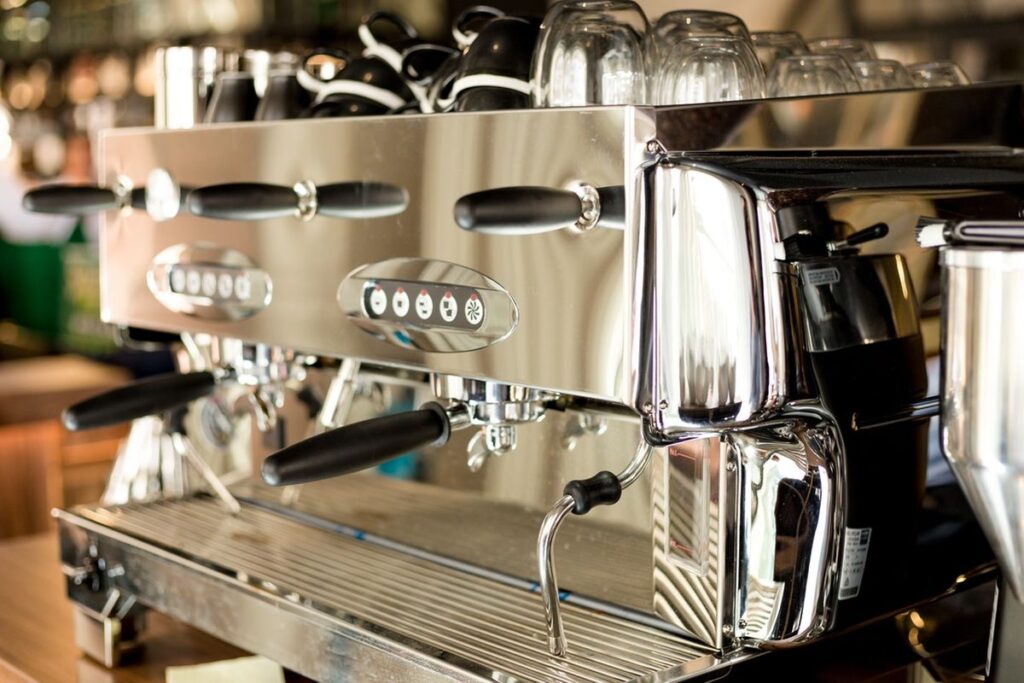We’re all constantly looking for ways to get more done on our normal days. One of the ways to add a few extra minutes to your day is to avoid the long queues at the coffee shop and invest in a quality espresso machine. Having your own espresso machine enables you to make your café favorites whenever you want without leaving your home or your office to get them.
With coffee makers being all the rage right now, the question on everyone’s mind might be how do espresso machines work? In this article, we’ll be looking at the parts that make up automatic espresso machines. I’ll also be looking at the way manual coffee machines work, and I’ll give you a nifty guide on prolonging the life of your espresso machine by cleaning it properly.

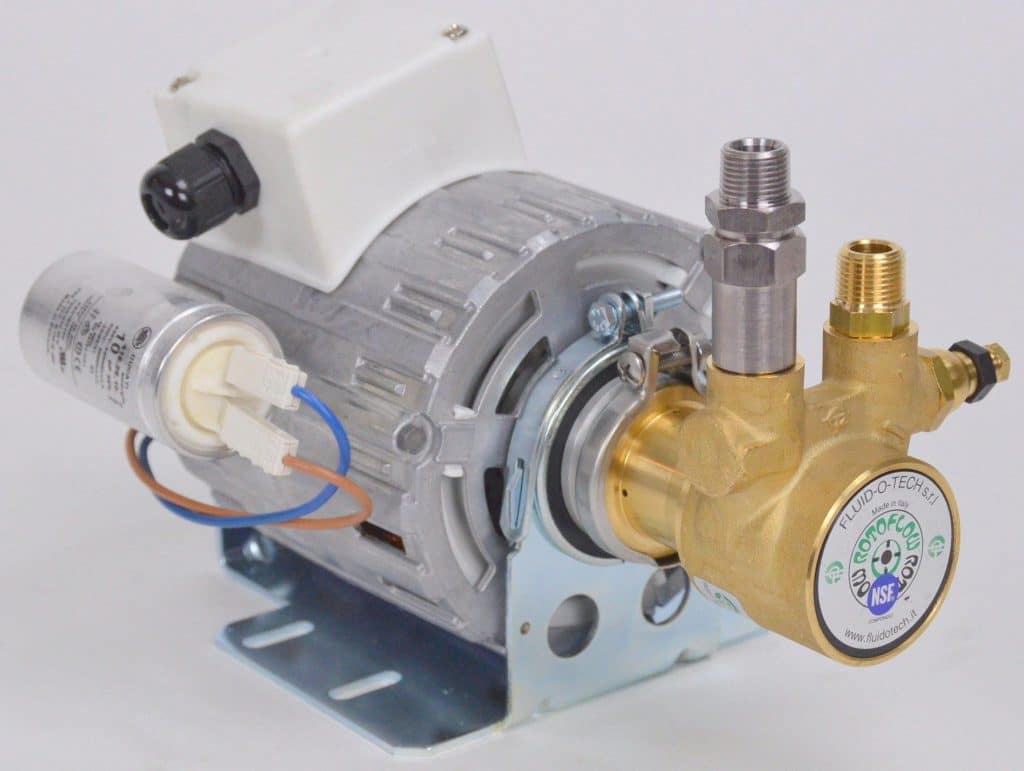
These types of pumps use a spring and piston design that easily vibrates to move water around and create the pressure needed to make an espresso. Vibratory pumps are commonly used because they have quite a few benefits that make them ideal for compact home espresso machines.
Some of these benefits include:
While these little pumps do make a bit of noise some brands make the effort of mounting these vibratory pumps in a way that makes them slightly quieter. And if you don’t like too loud noise from an espresso machine, then you can take a closer look at one of the best nespresso machines, because they make much less noise without losing the quality of the drink.
Rotary pumps or vane pumps are larger motors that make use of a gear-type mechanism to generate pressure. These types of pumps are mechanical and are quite complex. Essentially, a motor spins a simple disc inside a larger chamber. The disc is then segmented into different sections by vanes and slats which control the rest of the machine.
The advantages of these pumps include the following:
If you want an espresso machine that has a rotary pump, the unit will be slightly larger than the compact versions and will also be more expensive. It is however worth investing in if you’re going to be using your espresso machine often.
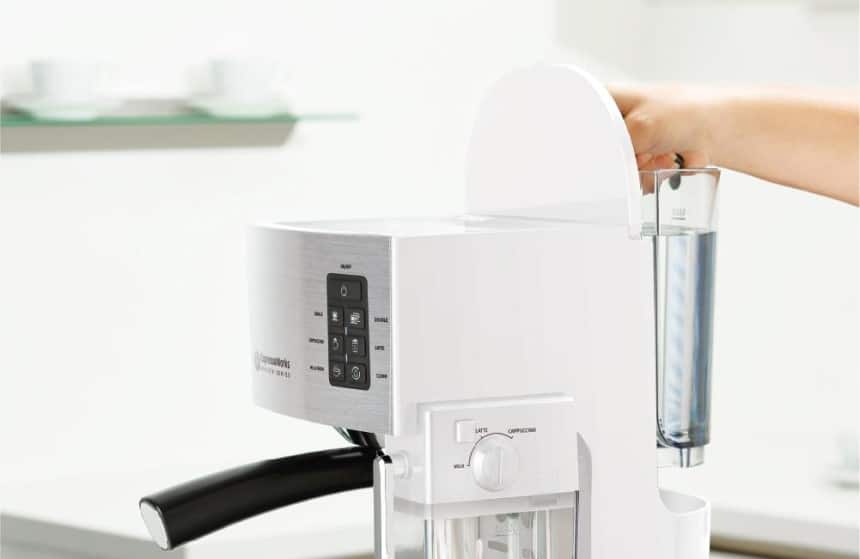
Smaller espresso machines often have a detachable reservoir which makes for easy cleaning. Some models also have clear water reservoirs making it easier to see the water levels.
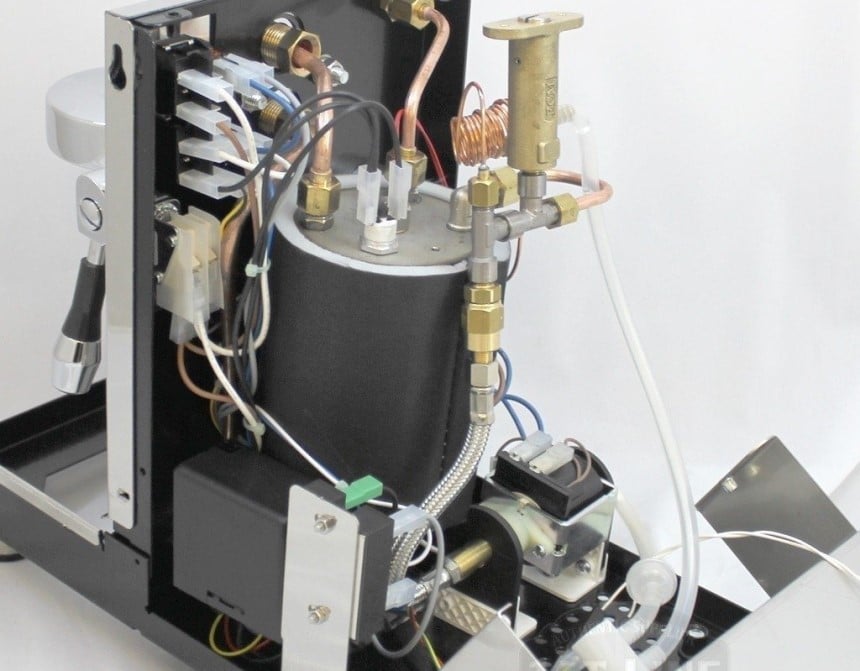
This is the original system used in traditional espresso machines. The water heats at a temperature ranging around 250°F or 120°C. The water temperature then drops to the correct brew range in the group just before hitting the coffee grounds. This is the way traditional spring lever espresso machines work.
While this is the tried and tested way of heating espressos, it’s not the most reliable way to do it. If the group is too low, you’ll end up with a final brew temperature that’s too low. When the group overheats, the brew temperature will be too hot. Using this type of boiler on your home espresso machine means you’ll have to turn the unit off after about five shots to cool down. If not, the temperature in the group will be too high.

Average quality espresso machines are made using thermostats that can heat less than an ounce straight off the bat. High-end models use thermostats that can eat roughly 25 ounces of water. On average, you only need a thermostat that can boil anywhere from 12 to 16 ounces of water to have the right temperature espresso.

Theoretically, these types of boilers can produce the most stable temperatures to produce the perfect coffee drink. These two steam boilers can reach and maintain pressure ideal for frothing milk. This is ideal for drinks like lattes that require a great deal of milk foam.
A modern espresso machine that sports the double boiler feature is the Breville Fully Automatic Espresso Machine with Oracle Touch. With its 4-key formula, it offers caffeine lovers a variety of specialty coffee drinks. Not only is the temperature control unparalleled but the unit offers simultaneous steaming and extraction which offers a top-quality cup of espresso.
Other handy features that make this espresso machine a cut above the rest include its 8 customizable settings and programmable milk temperature. The user can also easily pre-program 5 favorite coffee drinks, making it that much quicker to make your favorite café specialty drinks.
The foam delivered by the steam wand is automatically textured to your set preference that not only increases the flavor but will have you making Barista-style coffee drinks in no time! It’s no wonder this espresso machine is listed as one of the most advanced automatic models on the market.
Bigger home machines or those used for commercial business use the heat exchanger system. Simply put, the heat exchanger is a pipe placed inside the actual boiler. As water pumps into the group, it flows through the pipe and heats up to within the brew range temperature.
Since heat exchanger heating systems use a single boiler, the boiler itself provides the steam needed for stretching milk. The heat exchanger assists in creating the desired temperature-regulated water needed for brewing the perfect espresso.
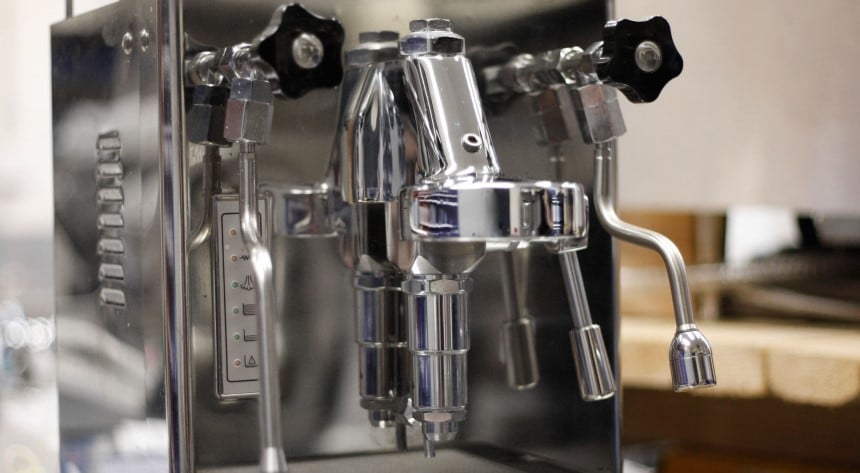
The two common types of group heads are saturated and semi-saturated. They can be defined as follows:
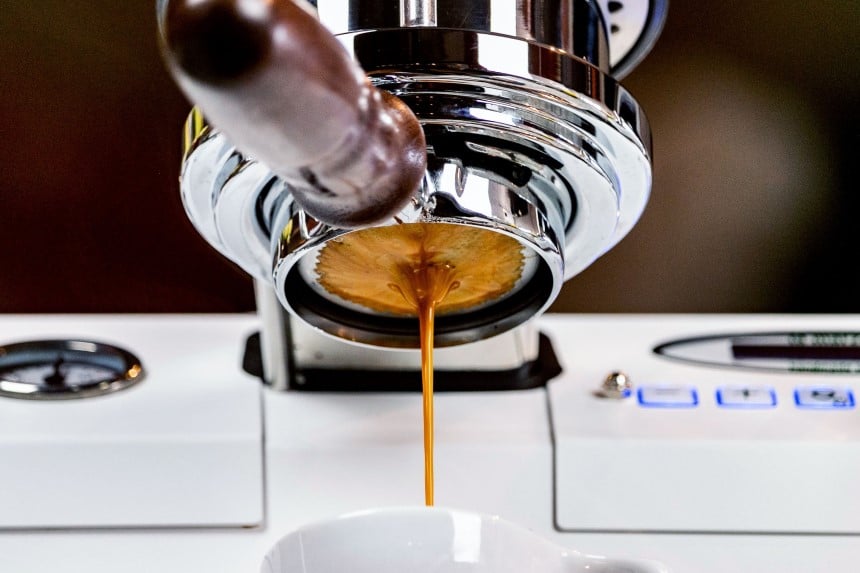
Just like the other components on an espresso machine, there are different options to use in different units. Four types of portafilters are listed as follows:
Without a doubt, one of the most popular espresso machines making use of a pressurized portafilter is the Gaggia Carezza De Luxe Espresso Machine. Since the portafilter is pressurized, it allows for both ground coffee beans and ESE pods to be easily brewed.
A pre-infusion feature pre-wets the coffee grounds before the brewing process starts, allowing not only for even extraction but for that robust flavor espresso lovers enjoy so much. Since the water reservoir is front-loaded, it can easily be pulled out and refilled when necessary.
It also sports a Pannarello frothing wand which is perfect for creating the right amount of foam needed to make delicious cappuccinos and lattes. The wand can be used to dispense hot water making it ideally suited to make tea and Americanos.
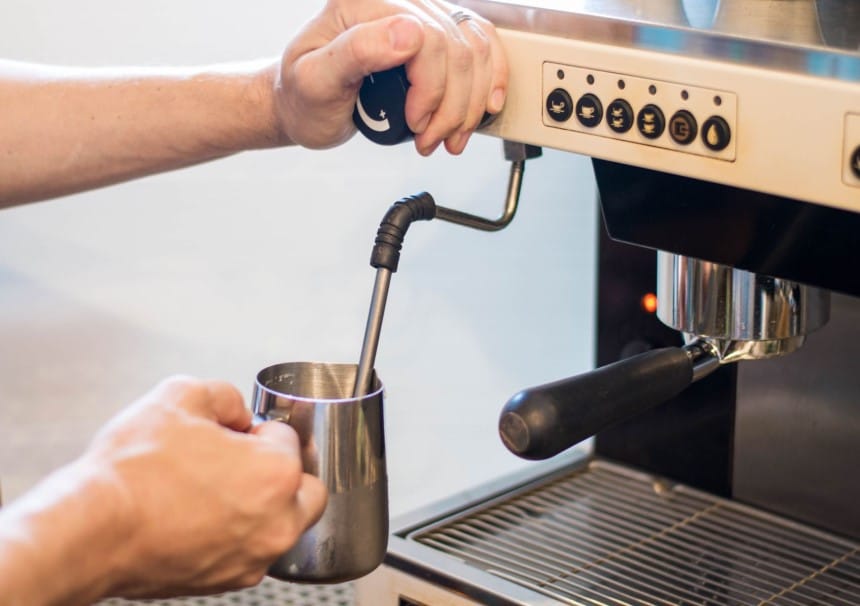
By doing this, air is introduced into the milk which causes the foam you see on drinks like lattes. The steam wand essentially works by shooting jets of steam through the small holes on the wand’s tip.

Some of the functions and controls that you’d find on a control panel include the following:
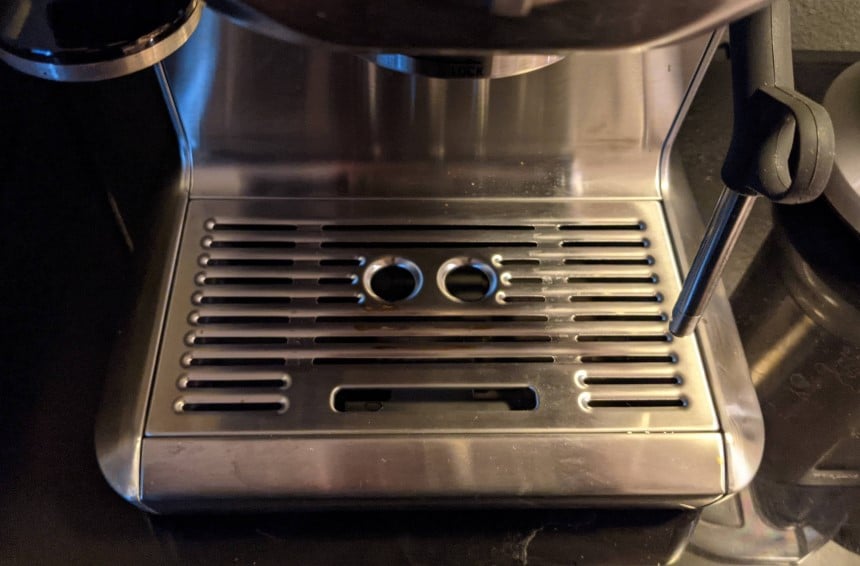
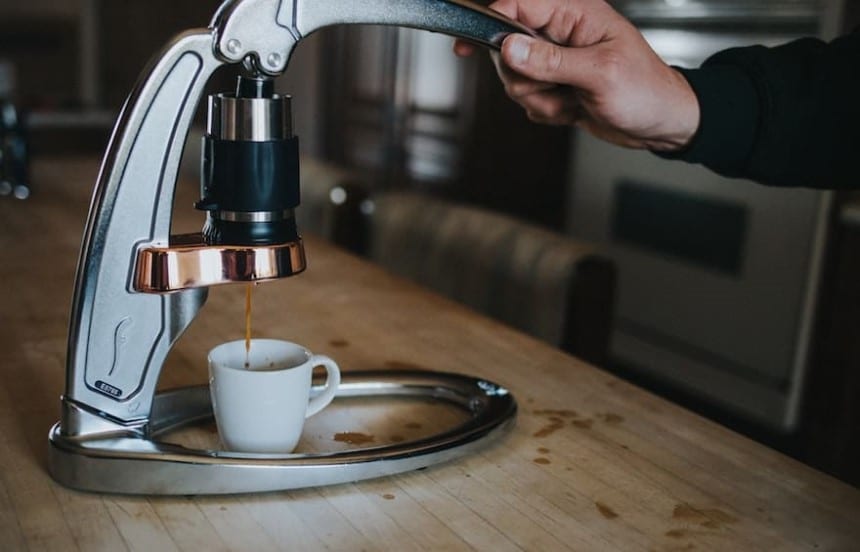
Spring piston lever: This type of espresso machine works when an internal spring pushes water through ground coffee under pressure. The user pulls a lever downward (i.e. pulling a shot) which forces the spring to compress. When the lever is released, the spring expands and forces the water through the coffee.
While the spring automates the pressure of the water, the barista or person using the machine can control the pre-infusion time as well as the volume of water running through the coffee. They also decide on the exact time to pull the shot. Needless to say, this takes a certain level of skill!
Direct Lever: A direct lever on the other hand doesn’t use a spring to automate the pressure. With this machine, it’s only the “pull” of the barista or user that forces water over the coffee grounds. A skilled barista will be able to change the pressure if they need to. Baristas refer to this skill as “feeling” the coffee which they’re taking a very calculated guess based on a lot of experience. Watching and timing of the pull define the true art of espresso making.
Not all coffee aficionados are sold on the idea of using automatic espresso machines. Manual espresso makers like the Flair Signature Espresso Maker are 100% manual, giving the user complete control over how the espresso turns out.
Another advantage of this nifty espresso press is that it can easily be taken with you to make your favorite drink without needing electricity! A padded carry case keeps your manual espresso maker safe and provides easy storage. A custom pressure gauge gives you an easily readable target espresso range. With the 6 to 9 bar brewing range, even a novice can pull shots like a true Barista!

As I’ve already mentioned in the section above, manual espresso makers require a lot of skill and a good sense of “feel” for when the shot is ready to be pulled. Semi-automatic espresso machines on the other hand take some of the guesswork out of the process because in essence the machine has been partly programmed to know when the brewing process is complete.
Automatic espresso machines control the exact amount of water that’s pushed through to the grounds. Some automatic coffee and espresso machines have digital readings that can assist the barista by allowing for the exact temperature required to be programmed in.
Super-automatic espresso machines are the models that have all the bells and whistles with features and functions that take coffee and espresso brewing to the next level. These types of machines are ideally suited to serious coffee lovers!
Some of the features you could find in a super-automatic espresso maker include the following:
Proper cleaning and regular maintenance will go a long way towards prolonging the lifespan of your espresso machine. Generally, espresso machines have a lifespan of 8 to 10 years if taken care of properly. We asked some coffee machine experts to share a few tips to help extend the lifespan of your machine.
 Daily cleaning
Daily cleaningThe point of investing in an espresso machine isn’t to add to your daily chores, however, if you want to keep enjoying good, clean coffee the trick is to clean as you go. Cleaning your espresso machine daily applies whether it’s a unit for home use or a larger machine used in a coffee shop for commercial purposes.
Follow these simple steps to get started:
Full backflush: Use a machine brush to scrub and loosen leftover coffee grounds. Use the blind filter together with the detergent specifically designed for your machine. Do this a few times until the water comes out clear. A good idea here would be to pull a few espresso shots to make sure there isn’t any detergent still left in the machine.
Steam wand: The steam wand is a very easy place for bacteria to grow and live. It’s important to purge as well as wipe down the steam wand before and after each espresso drink is made. If possible, let the steam wand soak in a detergent solution overnight or for a minimum of 20 minutes. Remember to remove the tip. Any components soaked in any type of detergent or cleaning solution should be rinsed several times to ensure all soapy residues are washed out.
Draining hose: Avoid coffee ground build-up by thoroughly cleaning the draining hose. This will also keep your drip tray lines from getting blocked. Ensure that you clean the drip tray, portafilters and filter basket.
Regular descaling:
Descaling
Trusted Source
Descaling agent - Wikipedia
A descaling agent or chemical descaler is a liquid chemical substance used to remove limescale from metal surfaces in contact with hot water, such as in boilers, water heaters, and kettles.
en.wikipedia.org
is a term you’ll have to become familiar with if you’re going to own any type of espresso machine. Descaling refers to the removal of
limescale build-up
Trusted Source
Limescale - Wikipedia
Limescale is a hard, chalky deposit, consisting mainly of calcium carbonate (CaCO3). It often builds up inside kettles, boilers, and pipework, especially that for hot water.
en.wikipedia.org
in the various components in your espresso maker. Limescale is a hard, chalky, white deposit that if not removed will damage the internal components of your espresso maker. It’s the same as the build-up you find in kettles or pipes. Descaling should take place once every month or when your machine alerts you to do it. Yes, some of the higher-end models notify you by utilizing a flashing light that the unit needs descaling.
If you were curious, here’s a quick vid for hard water and limescale origins:
Different models of espresso machines have different manufacturer’s recommendations for cleaning. Using the incorrect product can cause build-up or even damage to certain components.
A common household mixture to use is vinegar and water Trusted Source Vinegar | The Nutrition Source | Harvard T.H. Chan School of Public Health Not many foods play the role of both a prized cooking ingredient and household cleaner. Learn more about vinegar and its many varieties. www.hsph.harvard.edu . It’s important to rinse all components cleaned by vinegar. The last thing you want is an espresso tasting like vinegar!
Why should you clean out the old coffee grounds?
You might have heard different people emphasizing the importance of cleaning out your old coffee grounds. You might be wondering what the big deal is. Does it matter if you use your espresso machine for a few days without cleaning it? After all, is there a difference between yesterday’s coffee grounds and those of today? The truth is, yes there is!
If you’ve heard of people saying that certain coffee tastes awful or bitter, here’s why. Coffee grounds produce oil. These oils can create build-up and can cause bitter flavors to your fresh coffee. It’s important to flush the group head before every new cup of espresso. It’s also possible for old coffee grounds to create build-up and create bacteria.
After reading this informative article, I hope you’ll no longer be wondering, “How do espresso machines work?” Knowing the ins-and-outs of your espresso machine will enable you to use it properly as well as maintain and clean it correctly. Understanding the importance of each component and what it does will also help you identify any potential faults or flaws should anything go wrong.
By ensuring your espresso machine is correctly used and maintained, you’ll be guaranteeing yourself many hot and delicious coffee drinks, minus the long queues at the local coffee shop!


